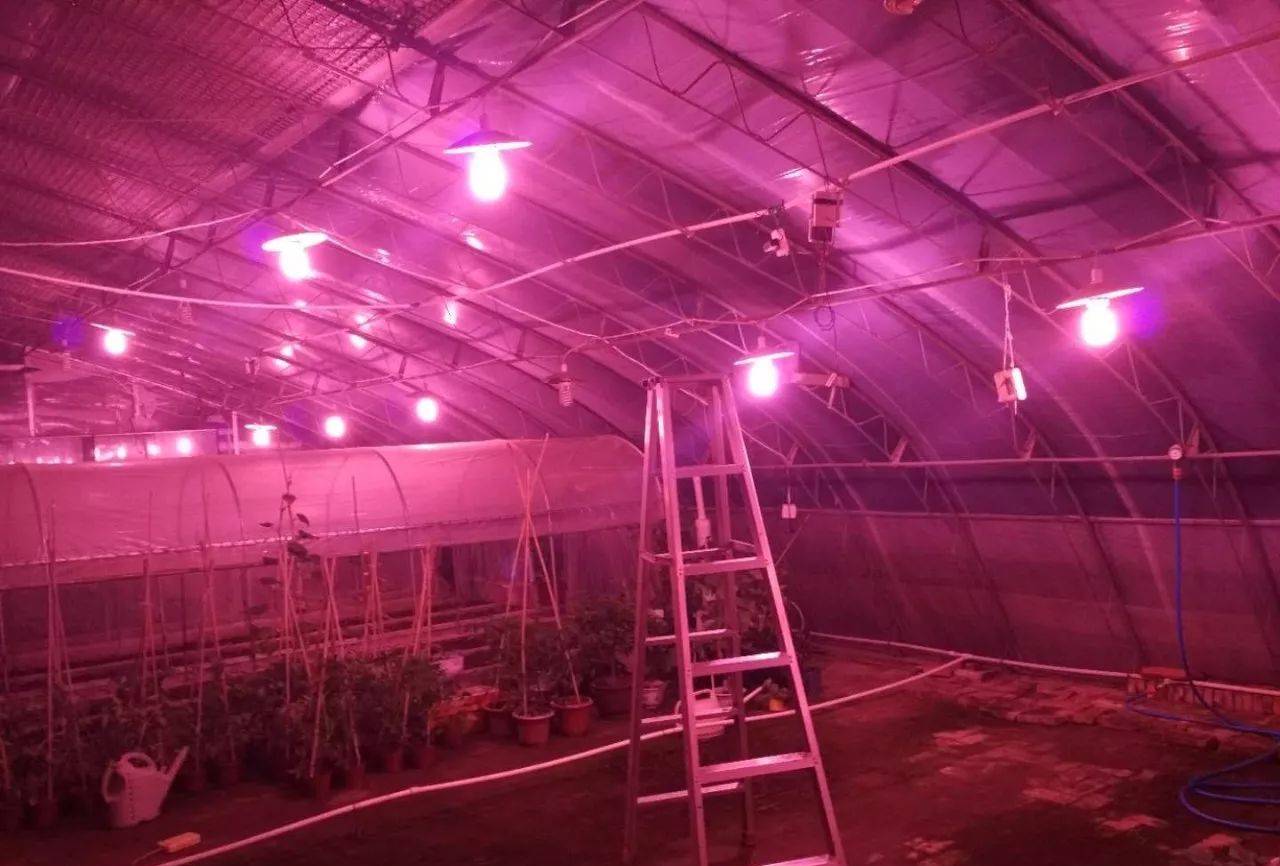Under low-temperature conditions, plants in greenhouses may suffer from frost damage, affecting their growth and yield. According to the University of Massachusetts, when nighttime temperatures drop to single digits, newly transported cuttings can become very cold or even freeze, resulting in frostbite or cold damage to the plants.
During cold nights, especially in winter, appropriate warming measures can not only prevent plants from cold damage but also ensure their continued growth and reproduction under adverse weather conditions. Therefore, knowing growers must know how to keep greenhouses warm on cold nights.
How to Keep a Greenhouse Warm at Night
From basic physical insulation to high-tech temperature control systems, we list a series of effective strategies and tips below to ensure that your greenhouse plants can receive the best protection and temperature conditions during cold nights.
1. Heat Storage
Some nice materials can absorb solar energy during the day and then slowly release heat at night, helping to maintain warmth in the greenhouse. These substances can be referred to as heat storage media.
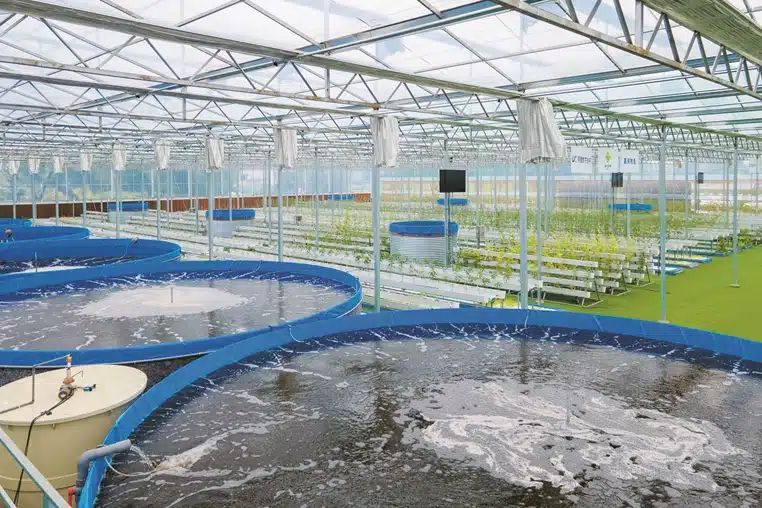
Heat Storage
Water, for instance, is an excellent heat storage medium due to its ability to absorb and store a large amount of heat energy. This can be utilized by placing barrels or tanks of water in the greenhouse. The water absorbs heat during the day and releases it at night, thus regulating the greenhouse temperature without consuming renewable energy.
Organically rich soil also has good heat storage capacity. By increasing the depth and improving the texture of the soil in the greenhouse, its heat storage capability can be enhanced. These methods are particularly suitable for small and medium-sized greenhouses, being economical and practical.
2. Greenhouse Heaters
If the greenhouse temperature is too low at night, relying on heat storage may not be sufficient as it may not raise the temperature significantly. Installing appropriate greenhouse heaters is more direct and effective.
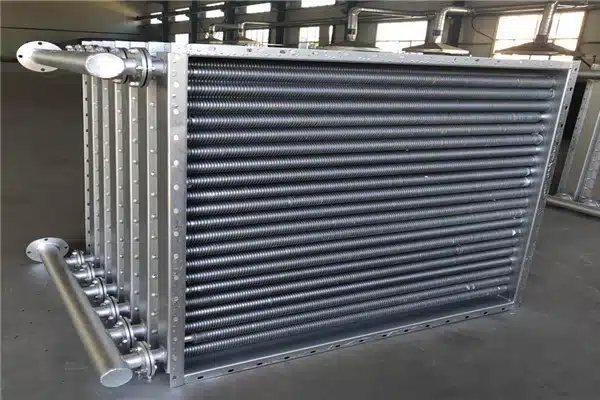
Greenhouse Heaters
Greenhouse heaters can be categorized based on heating methods and energy sources, including electric heaters, gas (natural gas and LPG) heaters, fuel heaters, biomass heaters, and solar heaters, among others. When choosing, consider the convenience and cost of obtaining energy, as well as the size of your greenhouse.
Additionally, when using heaters, especially gas and fuel heaters, maintain proper ventilation. Incomplete combustion of natural gas, LPG, diesel, or kerosene can produce colorless, odorless carbon monoxide gas, posing serious health risks to people and plants.
3. Forced-Air Heating Systems
Forced-air heating systems are a type of greenhouse heater, primarily for large greenhouses. This is because they can quickly heat a large area. Their main feature is the inclusion of fans, which help distribute hot air evenly inside the greenhouse, avoiding hot and cold spots. Many forced-air systems can be connected to temperature controllers for automatic regulation of greenhouse temperature.
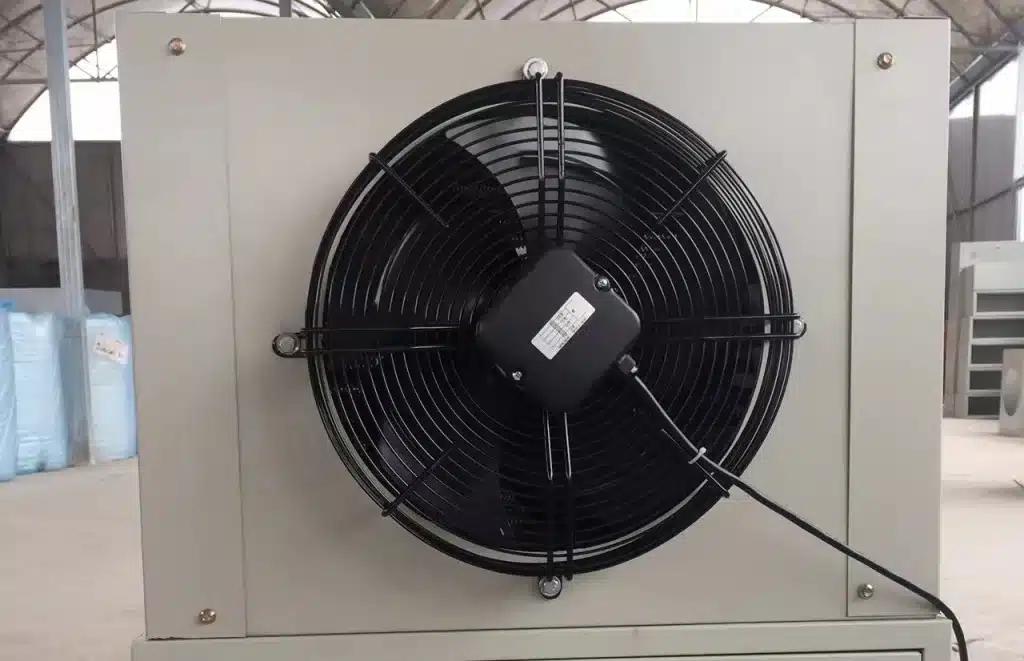
Forced-Air Heating Systems
For small greenhouses without a complete forced-air system, a combination of small heaters and a few fans can be used to quickly disperse heat, maintaining a reasonable temperature level inside.
4. Grow Lights
In addition to traditional heaters, grow lights offer a dual-purpose solution. They not only provide essential light to plants but also emit heat, contributing to a warmer greenhouse interior. Especially in winter with less sunlight, grow lights are an ideal choice.
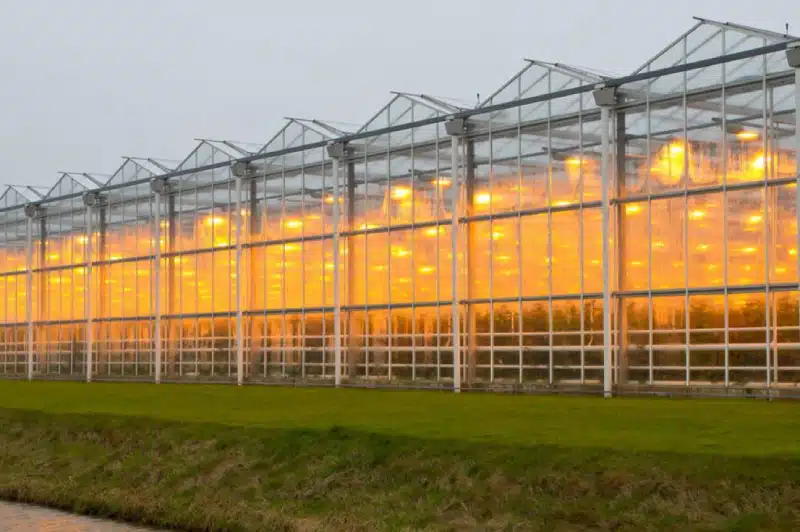
Grow Lights
Fluorescent and LED lights emit less heat, offering limited warmth to greenhouses at night. High-Intensity Discharge (HID) lights, more common in large greenhouses, emit more light and heat. Metal Halide (MH) lamps are suitable for the vegetative growth phase, while High-Pressure Sodium (HPS) lamps are better for flowering and fruiting stages. You can choose any type based on their characteristics.
5. Insulation Materials
In winter or high-altitude areas, the temperatures can be extremely low at night. To effectively block outside cold air while retaining internal heat, you need insulating materials.
Greenhouse coverings, such as glass, PC sheets, and plastic film, often serve as an insulating layer. Double-layer structures offer excellent insulation, with PC sheets being the most effective among these materials.
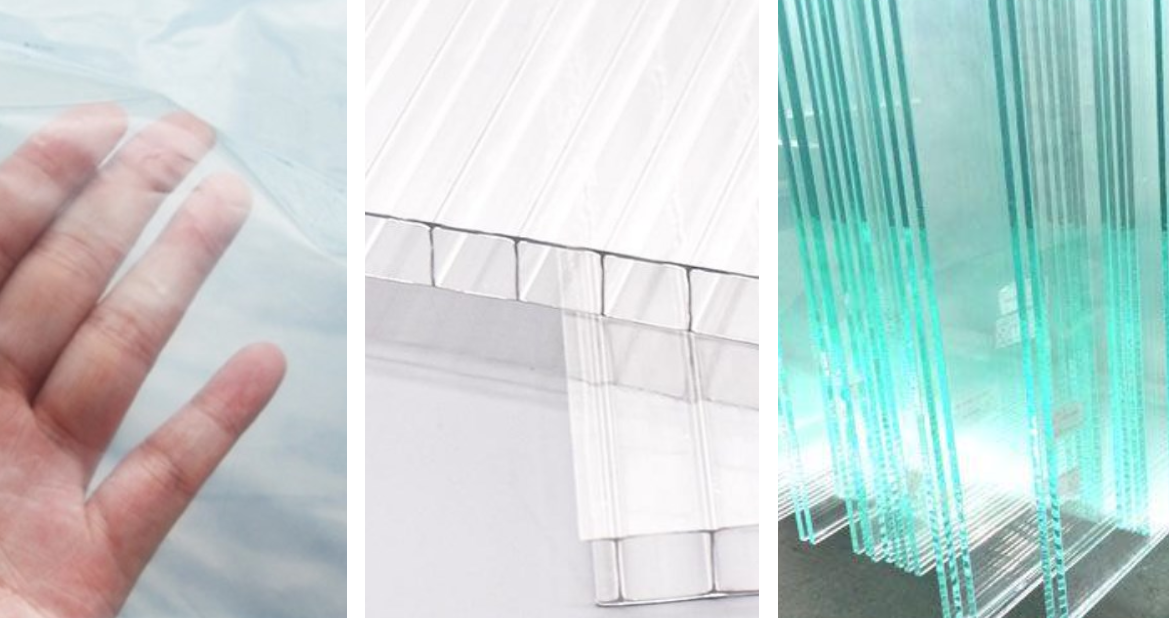
3 Types of Greenhouse Covering
However, some greenhouses equipped only with a single layer of plastic film or located in icy regions might not provide sufficient plant protection during harsh winter nights. In such cases, an additional layer of covering, like Greenhouses or Insulation Blankets, is necessary.
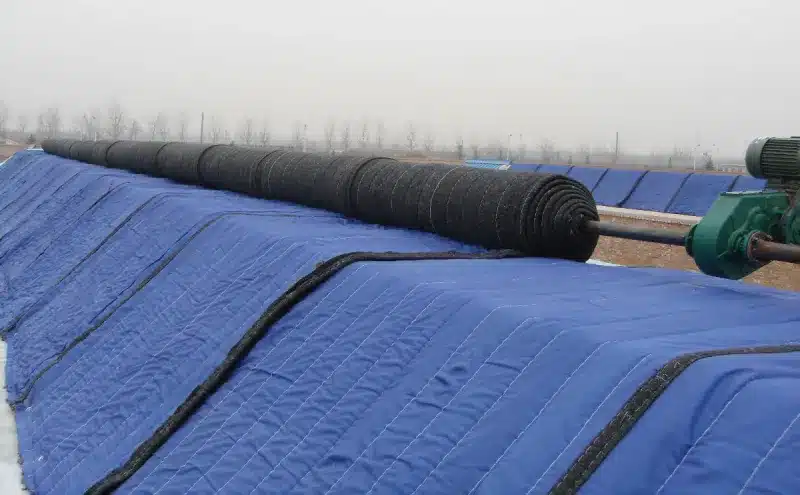
Greenhouse Insulation Blankets
Insulation blankets have poor light transmissibility and are more suitable for plants with low light requirements. For small greenhouses, manually removing coverings during the day or adding grow lights can compensate for light needs.
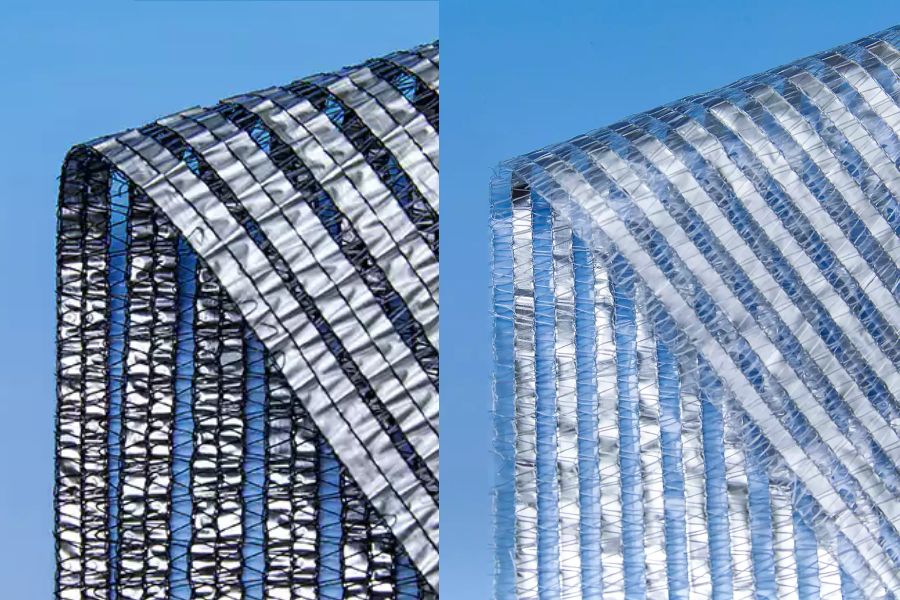
Greenhouse Thermal Screen
Thermal screens come in various shading and insulating models, offering flexibility. Lighter in weight, they can be integrated into greenhouse curtain systems for automatic opening during the day and closing at night.
6. Natural Windbreaks
If your area is prone to strong cold winds, planting trees or setting up windbreaks around the greenhouse can reduce their impact at night. Choose tree species that can withstand local climate conditions, preferably evergreen species resistant to wind and cold.
Place trees or windbreak walls on the upwind side of the prevailing wind direction for better protection. Also, consider the height and width of the trees to ensure they don’t block the sunlight needed for the greenhouse.
7. Greenhouse-Livestock Integrated System
The Greenhouse-Livestock Integrated System is an innovative approach to greenhouse insulation, combining greenhouse cultivation with animal husbandry. In this system, the heat generated by animals’ body heat, respiration, and fermentation of manure can be used to naturally raise the temperature inside the greenhouse. This not only improves energy efficiency but also helps reduce environmental pollution through the recycling of farm waste.
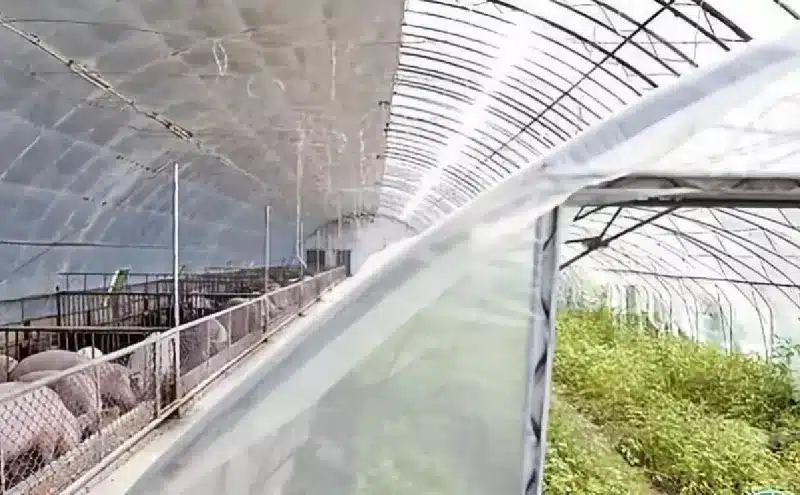
Greenhouse-Livestock Integrated System
Implementing this system requires integration with animal husbandry and has high initial costs due to the need for significant investment and careful planning and design. It also demands substantial start-up capital.
8. Monitoring Temperature and Humidity
Different plants have specific temperature and humidity requirements for optimal growth and reduced disease risk. Using temperature and humidity control sensors at night, tailored to the plants you are cultivating, is crucial to ensure that ideal conditions are maintained.
Advanced controllers for temperature and humidity are available, which accurately reflect the greenhouse environment and alert you when conditions are not conducive to plant growth. Consider installing these if necessary.
Frequently Asked Questions (FAQ)
1. How can you keep plants warm in an unheated greenhouse?
As mentioned earlier, several methods can help maintain a warmer environment at night in greenhouses without heating systems. One simple and effective method is using insulating materials, such as bubble wrap or insulation blankets, to cover the greenhouse at night, reducing rapid heat loss.
Additionally, water or organically rich soil can be used as heat storage media. These substances absorb heat during the day and release it at night, helping to keep the greenhouse warm.
2. How to Keep a Greenhouse Warm Without Electricity?
In the absence of electricity, consider alternative energy sources like solar power, diesel, gasoline, or wood. For instance, heaters equipped with solar panels can absorb solar energy during the day and release heat at night.
Additionally, employ various methods to prevent heat loss at night, such as covering with insulating materials or using windbreaks to protect your greenhouse from cold winds.
3. How to Keep A Small Garden Greenhouses Warm at Night?
Simple, cost-effective methods are ideal for small garden greenhouses. Lightweight insulating materials like bubble wrap and insulation blankets significantly reduce heat loss. Placing heat storage mediums (like water barrels) inside is also effective. Grow lights can provide necessary light for plants and help increase greenhouse temperature.
If your budget allows, consider installing small heaters or even a DIY heater. However, ensure to the distribution of the heat evenly throughout the greenhouse using certain tools.
4. How to Heat Commercial Greenhouses at Night?
Large commercial greenhouses, due to their scale and complexity, typically require more advanced insulation solutions. These include installing professional heating systems like forced-air or gas heaters for rapid and effective temperature regulation over large areas.
Utilize insulating curtain systems for efficient management of light and heat in greenhouses. For instance, open insulating screens during the day to let sunlight and heat in and close them at night to prevent heat loss. Most greenhouses also install high-intensity discharge lamps to promote plant growth and add heat.
Conclusion
Maintaining appropriate temperatures in greenhouses is crucial for plant growth and development, especially in cold climates. We’ve explored various methods to keep greenhouses warm at night and offered solutions for special scenarios. Each insulation strategy has its suitable applications and advantages. Greenhouse growers should choose the most appropriate warming method based on their specific circumstances and needs.
Additionally, if you have wholesale needs for greenhouse covering materials, contact us for bulk supplies from China. We offer the most affordable factory prices and provide free samples for your reference.
